Awards for Vireya Species at RBGE
In May 2007 the RHS Rhododendron & Camellia Committee
visited the Royal Botanic Garden in Edinburgh and made awards
to six species of vireya rhododendron held in its collection.
One species received a 'First Class Certificate' (F.C.C.),
the highest accolade awarded to a plant by the RHS, four were
granted an 'Award of Merit' (A.M.) and the final species a
'Preliminary Commendation' (P.C.).
These represent the first vireyas to gain awards since 1981.
The varietal names have now been registered with Dr. Alan Leslie, who maintains the International Rhododendron Register.
Our thanks to the RHS Rhododendron, Camellia & Magnolia Group
for allowing us to reproduce the following images and plant
notes from their Year Book.
All photographs © Lynsey Muir, RBGE.
 Hover over images for enlargements.
Hover over images for enlargements.
Rhododendron polyanthemum 'Sheila
Collenette' F.C.C.
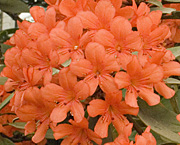 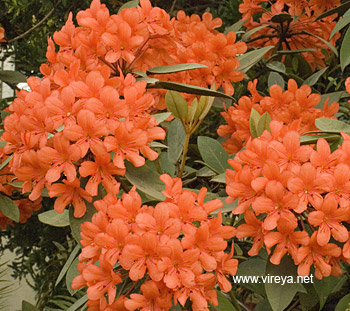
Rhododendron polyanthemum 'Sheila Collenette'
© Lynsey Muir RBGE
RBGE Accession No. 19799207
Flowering just once a year, this species puts on an immense
display of bright orange, scented flowers in the late spring.
Surprisingly, this species was not described until 1963 despite
now being common on Mt. Kinabalu in Sabah.
This cultivar is
named in honour of the original collector of the species who
made a significant contribution to the knowledge of vireyas
in Sabah and has more recently published a classic work on
the flowers of Saudi Arabia.
Rhododendron gardenia 'Jennifer
Jean' A.M.
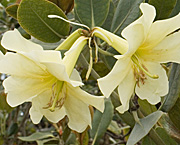 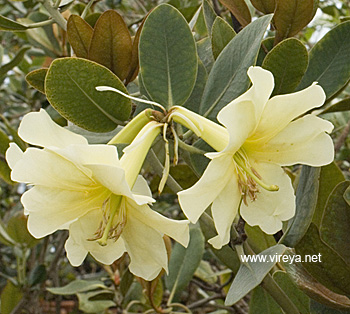
Rhododendron gardenia 'Jennifer Jean' - © Lynsey Muir RBGE
RBGE Accession No. 19769192
A slow growing large plant which has flowered regularly since
attaining about 1m in height. It is named after the genus
Gardenia noted for its strongly perfumed flowers and it is
well named as the large fleshy flowers fill the greenhouse
with scent when open and the plant always elicits comment
from visitors when in bloom.
It is named after the daughter
of the collector who is a passionate environmentalist and
field worker in the tropics.
Rhododendron loranthiflorum
'Dick Shaw' A.M.
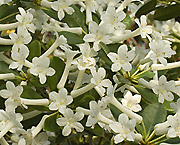 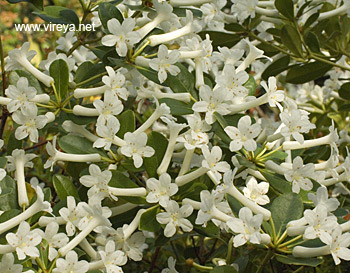
Rhododendron loranthiflorum 'Dick Shaw'
© Lynsey Muir RBGE
RBGE Accession No. 19839161
This species has been in cultivation since 1964 and was introduced
to Britain from Australia in 1983. It performs well wherever
vireyas thrive and there have been glowing reports of its
performance in Australia, New Zealand and the U.S.A. The plants
cover themselves in the white slightly scented flowers at
least once a year, usually in spring in Edinburgh.
It is named
after Richard (Dick) Shaw, formerly assistant curator at the
Benmore Botanic Garden, then curator at Kew and finally Edinburgh.
Dick was a fiery character who took a lively interest in the
Vireya Collection and scientific collections in general when
he was in charge.
Rhododendron macgregoriae
'Paddy Woods' A.M.
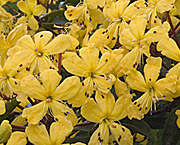 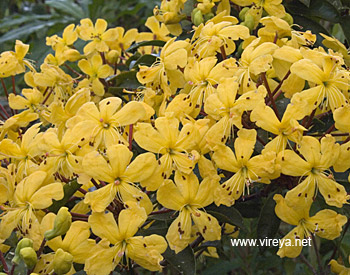
Rhododendron macgregoriae 'Paddy Woods'
© Lynsey Muir RBGE
RBGE Accession No. 19688041
This collection has been growing for almost 40 years in the
Royal Botanic Garden Edinburgh. It flowers freely, covering
itself in bright yellow flowers in the spring and often flowering
well at other times of the year. This is one of the easiest
species to grow and, coming from relatively low altitudes,
is heat tolerant. In the wild this species is very widespread
in New Guinea and very variable in flower colour.
This cultivar
is a good clear yellow with the flowers produced well clear
of the leaves. It is named after Patrick Woods the collector,
botanist and horticulturist at the Royal Botanic Garden Edinburgh.
He went on several expeditions to SE Asia collecting plants,
took a great interest and published on rhododendrons and orchids.
Rhododendron macgregoriae
'Tom Grieve' A.M.
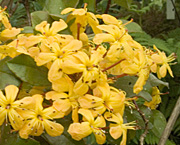 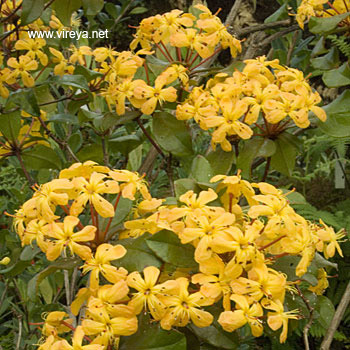
Rhododendron macgregoriae 'Tom Grieve'
© Lynsey Muir RBGE
RBGE Accession No. 19875242
This clone has light orange, almost bronze flowers which
are very freely produced mostly in the spring. It is named
after Thomas Grieve, a dedicated plantsman who worked in South
America for much of his life but returned to Britain as a
gardener at the Royal Botanic Garden Edinburgh. He was in
charge of the Vireya Collection for a number of years and
was the first person to persuade Rhododendron saxifragoides
to flower.
Rhododendron rousei 'John
Rouse' P.C.
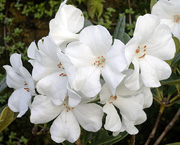 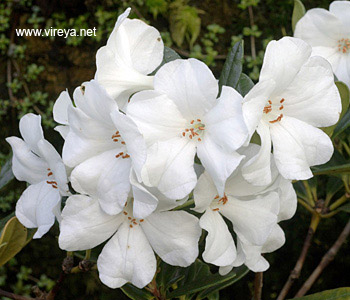
Rhododendron rousei 'John Rouse' - © Lynsey Muir RBGE
RBGE Accession No. 19905026
This species is now grown in collections worldwide and invariably
gets favourable comment from growers. The lustrous dark green
leaves contrast with the pure white of the flowers which in
Edinburgh are often best produced in the gloom of November
or December. It was introduced from Sibuyan Island in the
Philippines, its only known locality in 1989. It lacks scent
but will flower two or three times a year if deadheaded.
Both
species and clone are named after Dr John Rouse of Melbourne,
Australia, eminent scientist and grower and hybridiser of
vireyas.

| 